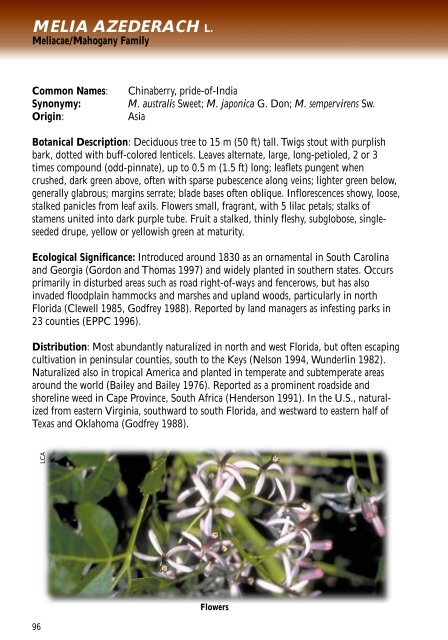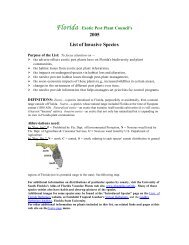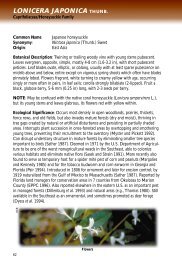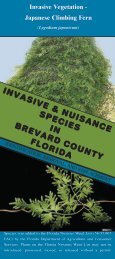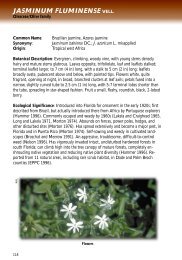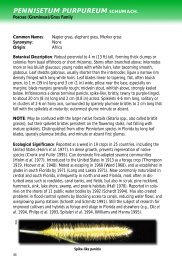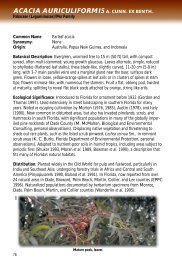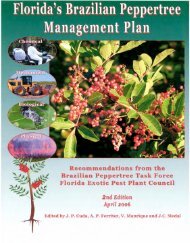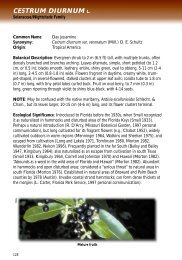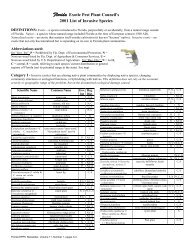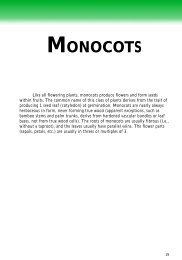DICOTS - Florida Exotic Pest Plant Council
DICOTS - Florida Exotic Pest Plant Council
DICOTS - Florida Exotic Pest Plant Council
You also want an ePaper? Increase the reach of your titles
YUMPU automatically turns print PDFs into web optimized ePapers that Google loves.
Melia azederach L.<br />
Meliacae/Mahogany Family<br />
Common Names: Chinaberry, pride-of-India<br />
Synonymy: M. australis Sweet; M. japonica G. Don; M. sempervirens Sw.<br />
Origin: Asia<br />
Botanical Description: Deciduous tree to 15 m (50 ft) tall. Twigs stout with purplish<br />
bark, dotted with buff-colored lenticels. Leaves alternate, large, long-petioled, 2 or 3<br />
times compound (odd-pinnate), up to 0.5 m (1.5 ft) long; leaflets pungent when<br />
crushed, dark green above, often with sparse pubescence along veins; lighter green below,<br />
generally glabrous; margins serrate; blade bases often oblique. Inflorescences showy, loose,<br />
stalked panicles from leaf axils. Flowers small, fragrant, with 5 lilac petals; stalks of<br />
stamens united into dark purple tube. Fruit a stalked, thinly fleshy, subglobose, singleseeded<br />
drupe, yellow or yellowish green at maturity.<br />
Ecological Significance: Introduced around 1830 as an ornamental in South Carolina<br />
and Georgia (Gordon and Thomas 1997) and widely planted in southern states. Occurs<br />
primarily in disturbed areas such as road right-of-ways and fencerows, but has also<br />
invaded floodplain hammocks and marshes and upland woods, particularly in north<br />
<strong>Florida</strong> (Clewell 1985, Godfrey 1988). Reported by land managers as infesting parks in<br />
23 counties (EPPC 1996).<br />
Distribution: Most abundantly naturalized in north and west <strong>Florida</strong>, but often escaping<br />
cultivation in peninsular counties, south to the Keys (Nelson 1994, Wunderlin 1982).<br />
Naturalized also in tropical America and planted in temperate and subtemperate areas<br />
around the world (Bailey and Bailey 1976). Reported as a prominent roadside and<br />
shoreline weed in Cape Province, South Africa (Henderson 1991). In the U.S., naturalized<br />
from eastern Virginia, southward to south <strong>Florida</strong>, and westward to eastern half of<br />
Texas and Oklahoma (Godfrey 1988).<br />
LCA<br />
96<br />
Flowers


